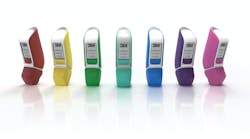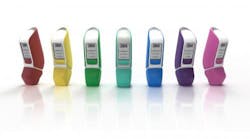Non-adherence to prescribed medications continues to be a challenge for healthcare providers and the pharma industry alike. How can companies address the issues that keep patients from taking their medications? That’s the question that’s been on the minds of many in the drug delivery world.
“Today, patient empowerment is a top priority when it comes to drug delivery,” explains Sam Van Alstyne, new products marketing manager, 3M Drug Delivery Systems. “As scientists and engineers begin drafting new designs for drug delivery methods, they are now starting with the patient at the ground level. The benefit of this new approach is the ability to first understand patient circumstances and the challenges they present.”
Understanding the patient experience is especially critical as many self-deliver therapies outside of clinics.
“We are observing an increase in the demand for assembled syringe combination products, both in auto-injectors and safety devices, which could be attributable to an increased interest in home-use dosage forms,” says Pam Barton, manager, Manufacturing Technologies, Catalent Biologics.
Innovative Injectables
The rise in at-home drug delivery has come in tandem with the increase in biologics entering the market. Because these biologics are typically designed for injections, more patients have been self-injecting medications at home, which has magnified certain shortcomings in traditional injectors.
“A lot of feedback from patients showed that there are drawbacks for existing technologies,” explains Royce Brockett, director of product management, Prefilled Systems & Delivery at West Pharmaceutical Services. “Usually a spring fires and the injection comes out. One of the drawbacks of a system like that is that the patient can’t control the speed of the injection, and there could be pain.”
West’s SelfDose injector has addressed that concern by allowing patients to deliver the injection at their own pace. West also factored in the difficulty with holding typical injectors if you have arthritis, and made SelfDose ergonomically designed for better ease-of-use.
Enable Injections took several of the same issues into consideration when it designed its enFuse platform — a line of wearable injection devices for high-viscosity biologics. Enable licensed over 10 years of research from Cincinnati Children’s Hospital focused on ways to minimize pain with vaccine injections, which resulted in a design that can control the rate of injection based on volume and viscosity. The device also incorporates a “pause factor” for taking breaks.
The enFuse devices are also smaller than many other wearables on the market, making them more discrete and comfortable to wear. The shape of the device and small needle hidden in the design also helps limit injection anxiety.
“Designed with the end user experience in mind, the enFuse platform provides benefits to the pharmaceutical manufacturer by being able to leverage existing primary container closures — reducing development costs and time-to-market,” says Dr. Jeannie Joughin, executive vice president and chief commercial officer of Enable.
Smarter Inhalers
Comfort and ease-of-use are also factoring into the latest designs for dry powder inhalers.
One of the newest device designs from CSP Technologies, XHaler, developed with Simplified Solutions Sweden, is also one of the thinnest entering the market. This can be especially helpful for patients who have to carry inhalers with them wherever they go.
The XHaler is designed to deliver 30 doses of a dry powder to the respiratory tract and features CSP’s patented Activ-Polymer technology, which the company says absorbs moisture to extend the shelf life of the medication. But its sleek, user-friendly design is what CSP says makes the new device especially attractive to drugmakers.
“XHaler presents a very promising solution for the dry powder inhalant sector,” says Gary Peters, program manager for CSP Technologies. “To reassure potential partners, we are conducting a stability study to show that the device, despite its simplistic design, can be used in challenging, high temperature and humidity environments.”
Smarter inhaler devices could also help patients with medication adherence.
Sensing technology being designed into the 3M Intelligent Control Inhaler (currently in development) detects whether a patient inhaled long enough to get the full dose of the drug.
“When it comes to inhalation therapy, for instance, patients often don’t use their inhalers correctly and may not even realize it,” Van Alstyne says.
One of 3M’s newest devices, the Intelligent Control Inhaler, is being developed to detect whether a patient inhaled long enough to get the full dose of the drug.
“By connecting it to a smartphone or tablet, the device could also remind the patient to take the drug and instruct him/her on how to use it. Finally, it could record that data to help guide and possibly improve future healthcare decisions,” Van Alstyne says.
As patient needs evolve, device manufacturers are continuing to find new ways to help pharma companies boost medication compliance.
[javascriptSnippet]

